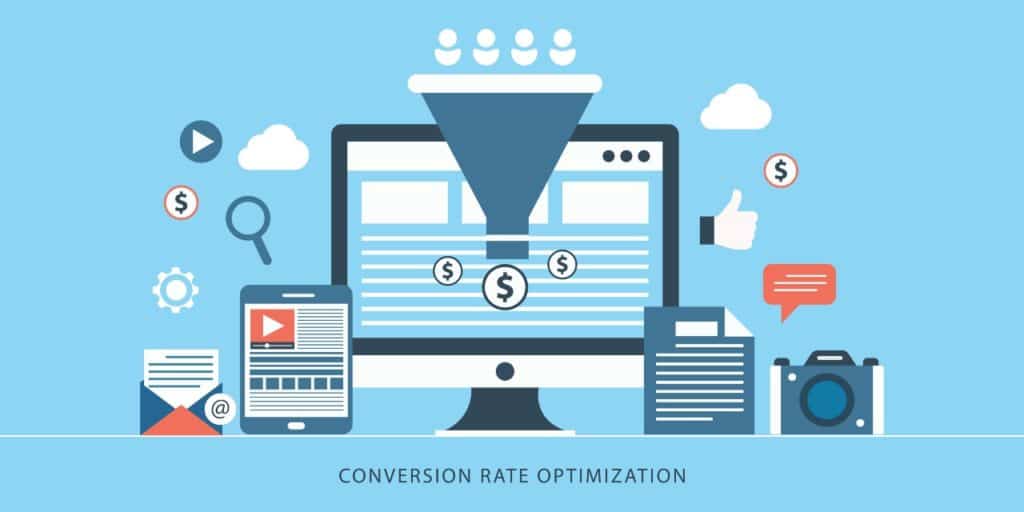The digital advertising space is forever changing and evolving; there is never a guarantee that a successful campaign will be successful again. That is why it is critical to be well informed and engaged in the top advertising metrics to ensure the smooth sailing of an advertising campaign. Today, we are sharing with you 10 of the best advertising metrics to track for a successful business campaign.
10 of the Best Advertising Metrics to Track
Total Site Traffic
Your website is likely the bread and butter of your business, as it is where most campaigns send potential clients or customers for more information and sales. Therefore, tracking the overall site traffic is a vital component of advertising metrics. When tracking your site traffic, you want to see where readers are being directed from, including other websites, social media, organic search queries, paid highlighted ads, emails, or other sources. Noting your strongest and weakest referrals will help to adjust your campaign accordingly.
Total Page Views
Similar to total site traffic, page views provide critical information about how individual components of your website are performing. With this information, you can improve poor-performing pages and take advantage of the pages that draw the most interest.
Bounce Rate
Your bounce rate refers to the number of visitors who make it to your site and leave without interaction. They click on it but then immediately click back out. A high bounce rate indicates that your website has a fundamental problem, such as a spammy-looking landing page or poor loading speeds.
Engaged Visit Rate
You may also hear about the engaged visit rate. While this term is less widely used, it is essentially the opposite of a bounce rate. It measures the number of quality visits you receive where readers actually interact with your website in one form or another.
Impressions
Impressions is a term used to describe when an ad is viewed or displayed by users. Now, this doesn’t mean that the ad was seen, just that it was up and available. It is a tricky way to calculate brand awareness, which is where CPM comes in.
CPM
CPM, or cost-per-thousand-impressions, is how one measures earnings for displaying an ad. A low CPM will indicate that visitors do not see the ad; therefore, one may need to shift it to another location or a different format to enhance interactions.
Clicks
Now that we have the broader metrics covered, we will dive into the nitty-gritty details of advertising metrics!
Click tracking is critical in advertising because it shows when a visitor actually clicks on your marketing message to see more, whether it is to view a product, be redirected to the desired page, etc. When tracking clicks, CPC and CTR are common lingoes you will hear.
CPC and CTR
CPC, or cost-per-click, is the amount one pays every time an ad is physically clicked on. If you have put your ad on another’s platform, you will use CPC as a payment method. If you wanted to see how much you were paying per click, it would be:
CPC = Total amount spent / Total measured clicks
On the other hand, CTR, or Click-through rate, is the ratio of ad clicks to impressions. To put it simply, it is when a visitor clicks on an ad and then proceeds through to the business’s main landing page of their website.
CTR = ( Total measured clicks / Total measured impressions ) x100
Leads
A lead is a term used to describe when a new customer or potential referral is being funneled into an advertising sequence. The CPL (cost-per-lead) measures CPL = Total Amount Spent / Total Attributed Leads
While the lead doesn’t necessarily need to make a purchase, their metrics are tracked by interacting with the business in some way, such as signing up for an email list. It is similar to a micro conversion, which is coming up next.
Conversions
Conversions are another key element of advertising metrics that demonstrate substantial progress for the business. There are two fundamental types. First, there is a macro conversion, which is the completion of a purchase. The second is a micro conversion, which is the completion of an activity. An activity may be an email sign-up, a form submission, a consultation scheduling, or some other tasks requested by the business.
Concerning conversion metrics, there are three standard terms you will hear:
- CPC
-
- CPC indicates cost-per-conversion. CPC = Total Campaign Cost / Total # of Conversions
-
- CPA
-
- CPA indicates average cost-per-acquisition, which is the amount of a specific ad. CPA = Total Cost of Conversions / Total # of Conversions
-
Conversion by Channel
Conversions by Channel demonstrate how much traffic you get from each source you are using, whether it is social media, paid ads, organic searches, etc.
Return on Advertising Spent
Return on Advertising Spent (ROAS) is another term used to understand how a specific ad or marketing choice benefitted you. For example, if you had a 5-point campaign process, this would measure just one part of the puzzle. To calculate it, you would perform ROAs = Total Campaign Revenue / Total Campaign Cost.
YoY Comparisons
The above metrics are critical in tracking the specifics of your advertising campaign. However, these metrics are hyper-specific, a single piece of the puzzle. A YoY, year-over-year, comparison allows you to look at the puzzle as a whole to see how you have performed throughout the seasons. When you take a birds-eye view of an advertising campaign, you can see greater trends such as holiday changes, economic shifts, and other larger variables. By combining both specific and broader metrics, you will have a greater understanding of your long-term advertising success.
 Channel Specific Advertising Metrics
Channel Specific Advertising Metrics
Lastly, we do want to take a moment to touch on channel-specific advertising metrics. For example, YouTube will have different advertising tracking options than other big-name platforms like Facebook, Twitter, or Instagram simply because it is a video-driven platform. YouTube, for instance, utilizes cost-per-view (CPV) and video viewership, which you won’t see on other channels. Therefore, when delving into advertising, you should be fully aware of each channel’s advertising metrics to track.
Don’t Go it Alone!
If you need help with running an advertising campaign in the Pacific North West to increase sales for your commercial business, contact Spotted Fox Digital Marketing for the best advertising campaign.


 Channel Specific Advertising Metrics
Channel Specific Advertising Metrics